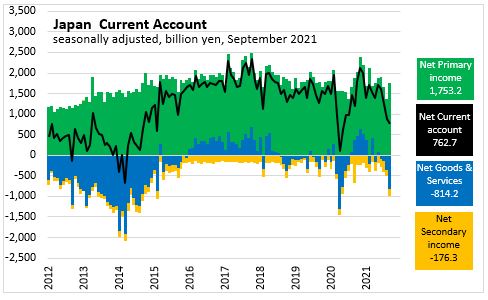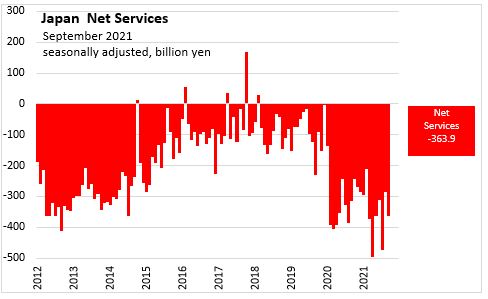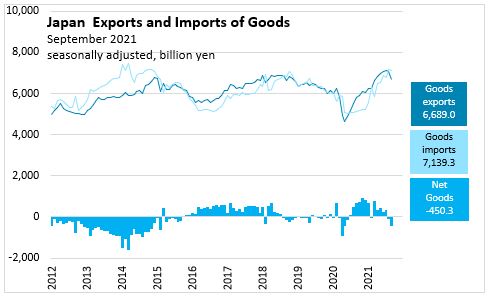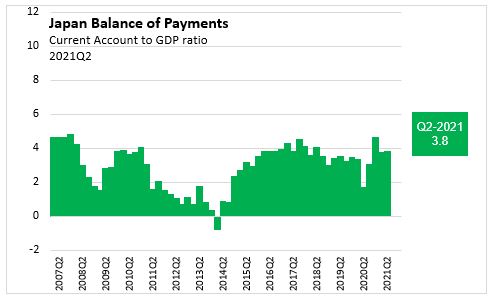The Economics and Statistics Division maintains archives of previous publications for accountability purposes, but makes no updates to keep these documents current with the latest data revisions from Statistics Canada. As a result, information in older documents may not be accurate. Please exercise caution when referring to older documents. For the latest information and historical data, please contact the individual listed to the right.
<--- Return to Archive
For additional information relating to this article, please contact:
November 09, 2021JAPAN CURRENT ACCOUNT AND TRADE BALANCE, SEPTEMBER 2021 
Current Account (September 2021 vs August 2021)
The current account surplus narrowed by 117 billion yen to 763 billion yen.
The goods and services trade deficit widened by 445 billion yen to 814 billion yen.
The primary income surplus widened by 375 billion yen to 1,753 billion yen.
The secondary income deficit widened by 47 billion yen to 176 billion yen.
Trade Balance (September 2021 vs August 2021)
Japan's goods trade deficit widened by 366 billion yen to 450 billion yen
- Exports of goods decreased 378 billion yen to 6,689 billion yen
- Imports of goods decreased 12 billion yen to 7,139 billion yen
Net Services trade deficit widened by 79 billion yen to 364 billion yen.


CURRENT ACCOUNT AS A SHARE OF GDP (2021Q2 over 2021Q1)
Japan's current account (as measured as a share of GDP) widened 0.1 percentage points to 3.8%.

The ratio of the current account balance to the Gross Domestic Product (or % of GDP) provides an indication of the country's trade and income flows relative to the size of the economy. The ratio is calculated by dividing the net values of exports less imports, primary Income (interest and dividends) and secondary income (transfers) over a period by the gross domestic product for the same period. Although called a ratio, it is usually expressed as a percentage. A current account surplus indicates upward pressure on the foreign exchange rate unless it is offset by net outflows (leading, acquisition of assets) outside the country.
REFERENCES
Report | Press Release | Balance of Payments
Based on Table 6s-a-2 Current Account (seasonally adjusted), Monthly
OECD, Quarterly balance of payments statistics
<--- Return to Archive